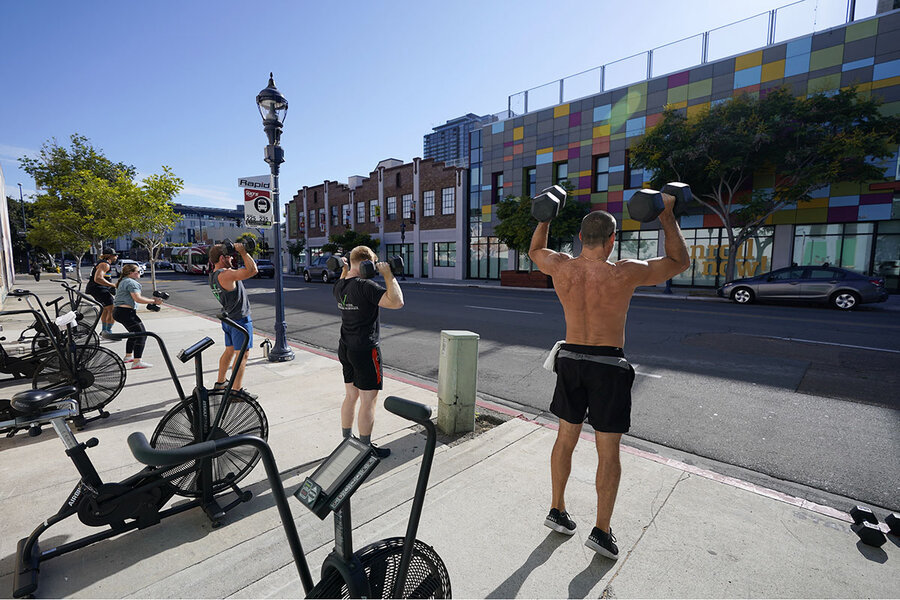You are here
 Pandemic opportunity? Pumping new life into cities. How cities are reclaiming streets from cars and easing inequality amid the pandemic. The Christian Science Monitor
Pandemic opportunity? Pumping new life into cities. How cities are reclaiming streets from cars and easing inequality amid the pandemic. The Christian Science Monitor ....From Boston and Barcelona to Bogotá and Seoul, cities around the world have responded to the pandemic with an accelerated “taking back” of streets from cars and returning them to pedestrians and cyclists. Although some of these moves were declared to be temporary, they have faced little pushback, and the sense is that once the world’s cities reemerge from a new wave of pandemic lockdowns, many of the changes will be here to stay – forever altering urban landscapes and lifestyles.
Urban planners are exploring other innovations, too, that are more unconventional and far-reaching. Seizing on the moment to redesign how people use space, they are looking at such things as turning suddenly empty office buildings into badly needed residential spaces; rezoning so that work, leisure, and school can be within easy reach, creating self-contained neighborhoods that are their own “15-minute cities”; and reimagining park space to link long-isolated neighborhoods.
Some of these innovations are already changing people’s lives. In New York City, where 100 miles of road were made into open streets for pedestrians and cyclists to use, Alexandra Nye is reveling in her walks and bike commutes down 34th Avenue in her Queens neighborhood.
“This neighborhood has only one proper park, and for how densely populated we were, we were always on top of each other,” says Ms. Nye, a librarian. “But now I see kids learning how to ride bikes, people doing Zumba, yoga, and I’ve even seen a book club meet on the street.”
Yet as cities continue to change in response to the virus, many people are worried that the new initiatives could benefit some residents over others, exacerbating social and economic inequalities. Questions swirl, for instance, about which populations will be served by the new bike lanes, pedestrian areas, and space for sidewalk cafes – the affluent or low-income?
But here, too, the pandemic is leading to changes that could ease divides. In Oakland, for example, city officials and local residents are launching an initiative in predominantly Black and Latino neighborhoods called “essential places.” By slowing or diverting cars with cones and signs, it aims to help pedestrians in those communities safely reach places such as grocery stores and health clinics that are located along heavily trafficked roadways. ...



Recent Comments